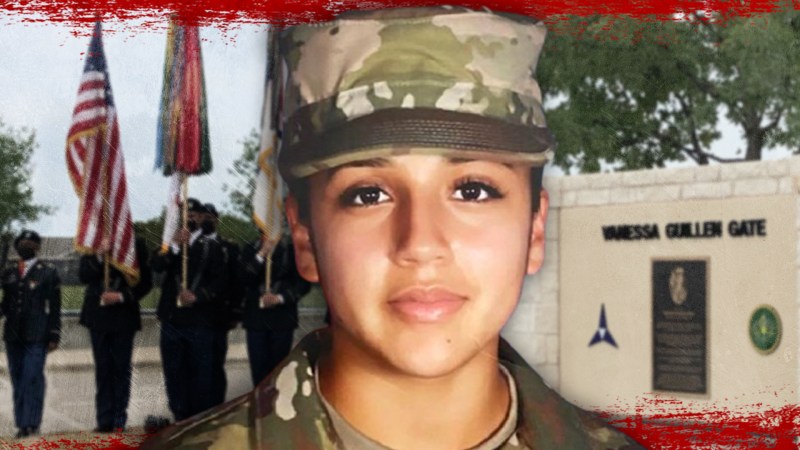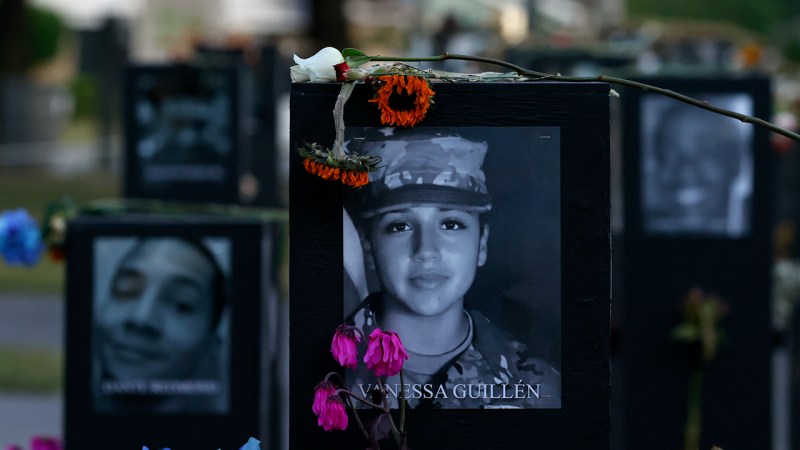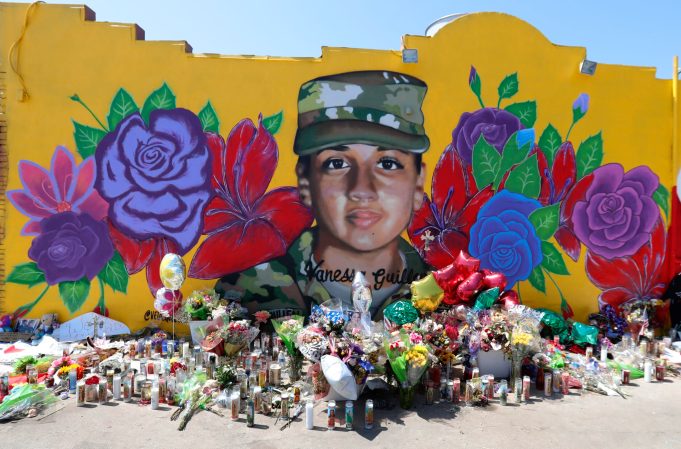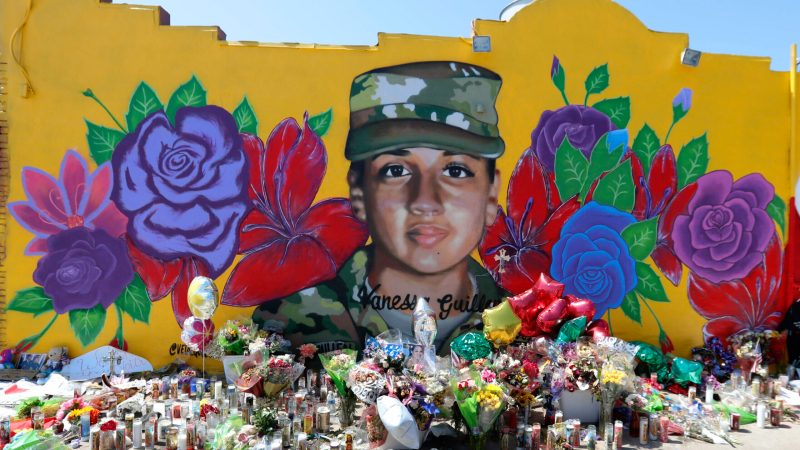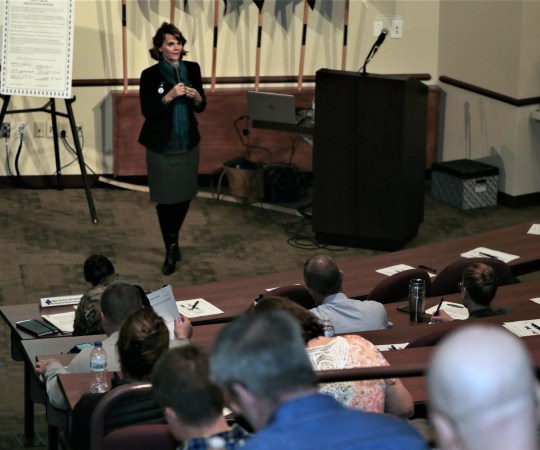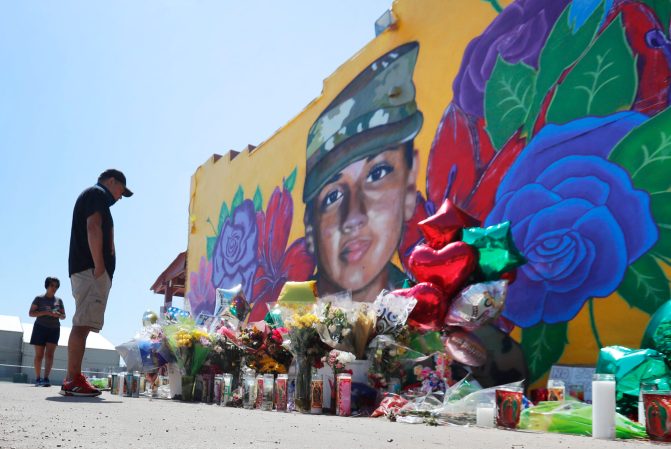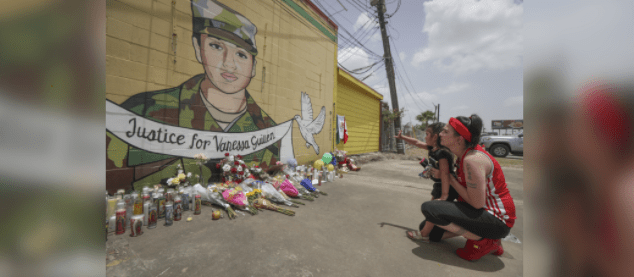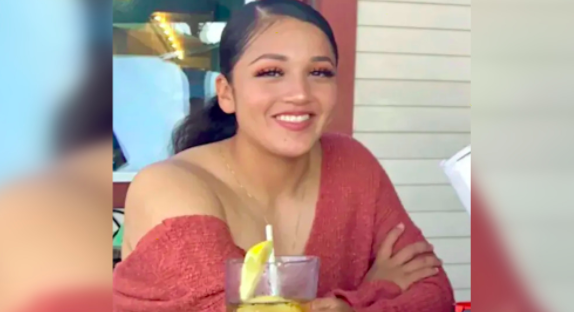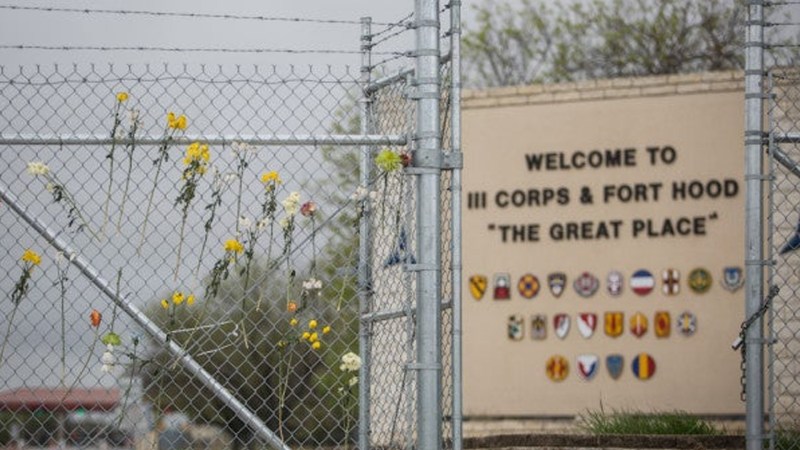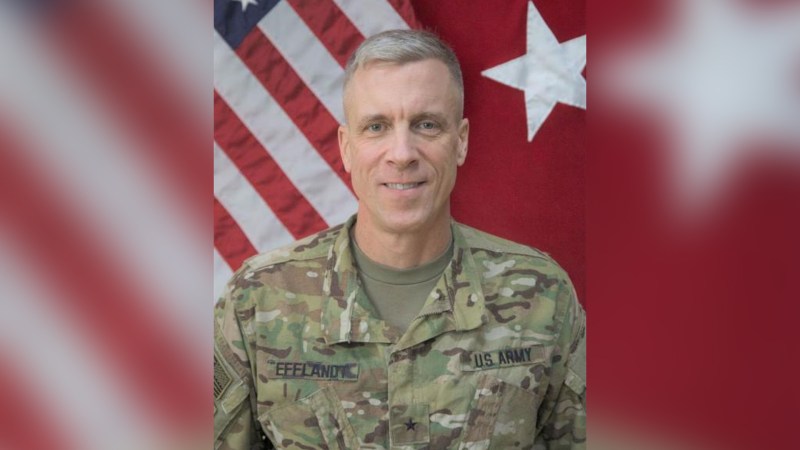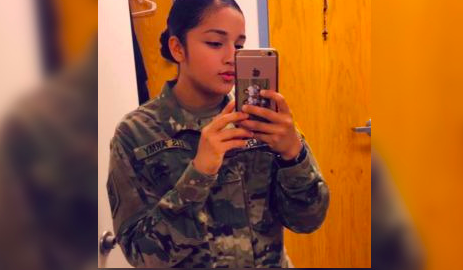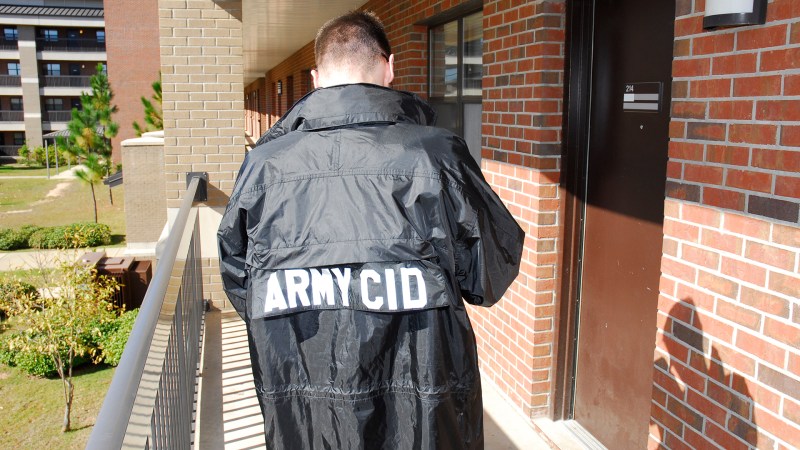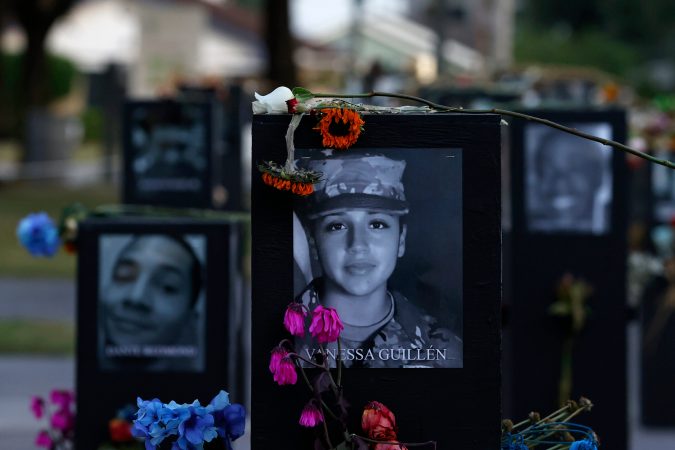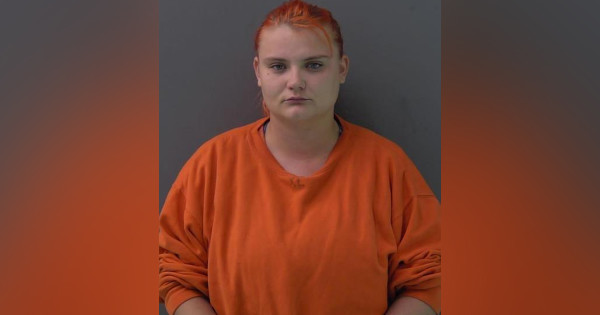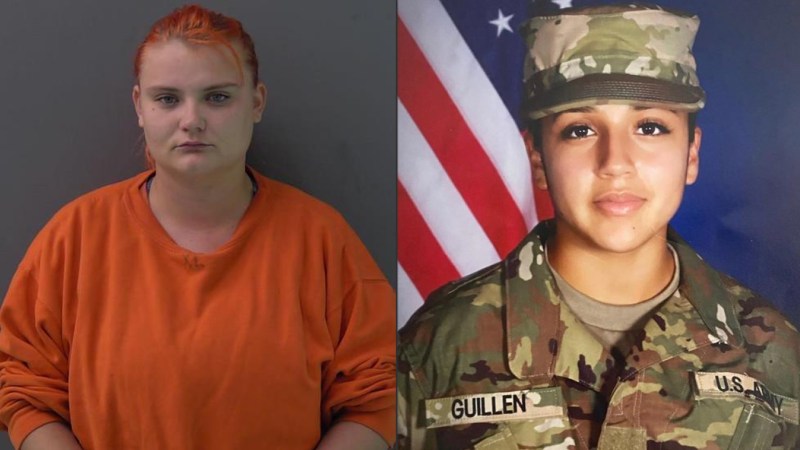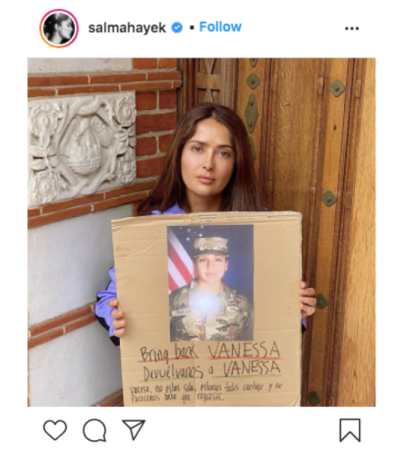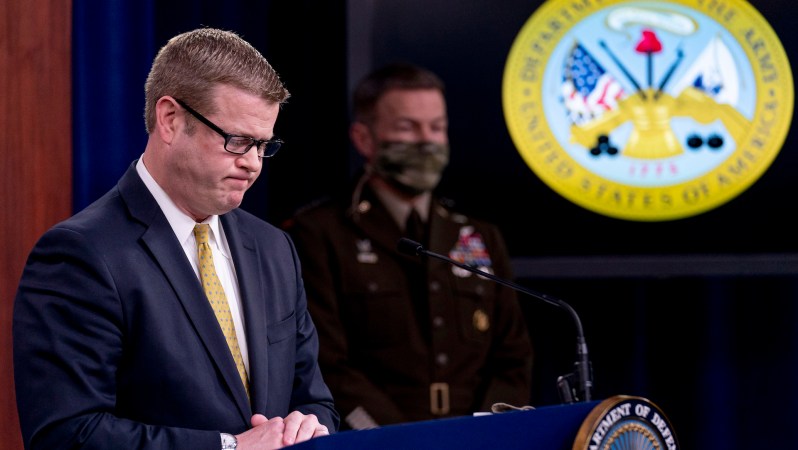Lupe Guillén used to think she wanted to join the military. And why wouldn’t she? Her older sister Vanessa always dreamed of military service, and growing up, Lupe wanted to do everything Vanessa did.
But Vanessa — who joined the Army in June 2018, and whose widely-publicized death at Fort Hood in April has forced a reckoning at the highest levels of the Army — was more than just a soldier.
Lupe, who is 16 and was interviewed with her mother’s consent, told Task & Purpose that Vanessa, 20, was planning for her future. She was going to finish out her Army contract, go to college — Lupe said she wanted to study chemical engineering at Texas A&M — get married, and start a family.
“That’s so much stuff!” Lupe recalled telling Vanessa. “And she was like, ‘I already made a plan.’ Her plan sounded perfect.”
Everyone who met Vanessa loved her, according to Lupe, who used to work with Vanessa at a flea market for extra spending money. After she left for Army basic training, not a day would pass where someone didn’t ask where her sister was.

Vanessa had a contagious smile. The 5 foot 2-inch soldier from Houston, Texas was brave and strong. She couldn’t wait to be a mom. In high school, Vanessa loved cross country and soccer. She enjoyed helping others at the gym and was thinking about getting certified as a professional trainer. She was “nice and respectful” to everyone she met, Lupe said, organized and focused, and every weekend, without fail, she would drive three hours home from Fort Hood to spend time with her family and boyfriend.
As Lupe recalled, on one particularly rainy day when Vanessa was picking her up from school, they passed a woman standing at the bus stop. It was pouring rain. Vanessa pulled over, asked if she needed anything, and offered her a ride.
“You know how they say no one’s perfect? Vanessa, she was like, the definition of perfection,” Lupe said.
But something seemed to be changing in Vanessa in the months prior to her death. In October, her mother Gloria noticed bags under Vanessa’s eyes. She had lost weight, her hair looked thin, and she was spending “hours and hours” at the gym.
“My mom kind of started pushing her, like ‘What’s wrong? Are you okay?’” Lupe said. “She kept pushing.”
Around February was when Vanessa finally told her mother what was bothering her, but asked that it stay between them. She said she was being sexually harassed by a higher-ranking soldier at work, but she wouldn’t tell her his name. Gloria told her to “rip up her [Army] contract in front of them and come back home,” Lupe said, but Vanessa insisted that she would “take care of it.”
“She told my mom, ‘I can’t report it, I’ve seen other girls pass through the same situation and they ignore them. They say that they’re lying. They don’t listen to them.’”
Lupe said the joyful woman she’d always known was changing before their eyes. Instead of smiling and laughing, she was “serious and not wanting to … talk to anyone.”

Then one Friday earlier this year, Vanessa came home like she always did, Lupe recalled. But this time she threw her bags to the ground, slammed her bedroom door, and started crying. When Lupe asked her the next morning what was wrong, Vanessa told her she was too young to understand.
On the weekend of April 19, Lupe thought everything was fine. Vanessa had come home and seemed to have turned a corner. Her personality was back, and she was excitedly planning her future with her boyfriend and considering colleges after the Army. She was happy again.
But that Sunday was the last time Lupe saw her sister. Three days later, on April 22, Vanessa Guillén was reported missing, and the nightmare for her family was just beginning.
Vanessa’s family knew something was wrong on the night of April 22. But Army Criminal Investigation Command (CID) officials first learned of her disappearance one day after it happened, according to court records.
That evening was when Vanessa’s sisters, boyfriend, and her best friend began to realize it had been hours since they had heard from her. It was out of character for Vanessa. Lupe texted. Everyone tried calling. But no one was getting through.
Still, they reasoned, Vanessa was probably just busy. Then her father Rogelio returned home from work. He had felt a sharp pain in his heart, he said, like he was being stabbed.
Something was wrong with Vanessa, her older sister Mayra told them.
“Mayra said, ‘I feel that something’s going on with Vanessa because she’s not responding, she’s not calling back, she’s not answering our texts … what’s going on?’” Lupe recalled her saying. “That’s when Mayra decided, ‘I’m not going to just sit here and do nothing.’”
Mayra left that night for Fort Hood and made it outside the base’s gates early the next morning, hoping to get answers from Army officials, Lupe said. It was April 23.
Later that day Army investigators were notified by a captain in the 3rd Cavalry Regiment that someone was missing: Private 1st Class Vanessa Guillén.
What happened next is laid out in court documents.
According to an official FBI timeline, one witness told investigators that on April 22, Guillén was working in an arms room on base. She left that room to go to another arms room, where Spc. Aaron Robinson, 20, was working “to confirm serial numbers for weapons and equipment.”
The story that Robinson told when first speaking to investigators on May 18, almost four weeks after Vanessa’s death, was that he saw Guillén just once that day.
Vanessa, who worked as a small arms/artillery repairer for the 3rd Cavalry Regiment, had come into the room Robinson was working in, he said, retrieved some paperwork and the serial number for a .50 caliber machine gun that needed to be serviced, and then left. Robinson, a combat engineer also assigned to the 3rd Cavalry Regiment, claimed he never saw her again.
After that, Robinson claimed he went home after work and spent the rest of the night there with his girlfriend Cecily Aguilar. Aguilar allegedly told investigators Robinson had left only once to go back to Fort Hood and use a government computer to register for some training.

But that story was pure fiction, according to investigators.
Aguilar allegedly told two different stories to investigators in the weeks after Guillén’s death before her story took another turn. On June 30, Aguilar admitted that Robinson said on the day of the murder that he’d “struck a female soldier in the head with a hammer multiple times at his arms room, killing her,” according to investigators.
Robinson allegedly said he had put the soldier “in a box” and took her out to the Leon River, roughly a 20-mile drive from Fort Hood. Then after Robinson unloaded the box holding Guillén’s remains, according to prosecutors, he went back to pick up Aguilar at the gas station where she worked, and the two drove back to the river.
“Spc. Robinson walked Aguilar over to the woods and opened up a box for Aguilar and she saw a dead female inside the box,” according to the FBI timeline. “Aguilar, on a later date, identified the dead female as Vanessa Guillén.”
Aguilar allegedly told investigators that she and Robinson dismembered Guillén, using “a hatchet or ax and a machete type knife,” according to court records. The two then tried but failed to burn the body before deciding to bury her “in three separate holes and [cover] up the remains.”
Robinson and Aguilar returned to the crude burial site on April 26, according to an analysis of their cell phone data by authorities. When they returned, the two had “hairnets and gloves,” according to the court records, which allied Aguilar had purchased “what she referred to as concrete” from an unidentified supplier using Facebook Messenger.

Robinson and Aguilar then allegedly dug Guillén’s remains back up and “continued the process of breaking down” her corpse. According to the court records, they burned the remains, hairnets, and gloves, and put them back into the three holes before covering them with concrete; later that night, the pair also burned their clothing at home.
On the same day that Aguilar allegedly revealed those details to investigators, a group of contractors doing work on a fence near the Leon River reported finding what seemed to be human remains. The court records say that investigators found “scattered human remains that appeared to have been placed into a concrete-like substance and buried.”
Investigators then turned back to Robinson. According to ABC News, Robinson was confined to his on-post barracks room the day that investigators found Guillén’s remains and placed under the watch of “an unarmed escort.”
But on the night of June 30, Robinson “absconded from Fort Hood,” the court records say.
Investigators then had Aguilar call Robinson, who “never denied anything they did to Vanessa Guillén and her body,” according to court records. Robinson also texted articles about the discovery of human remains to Aguilar.
“Baby they found pieces, they found pieces,” Robinson told Aguilar during a controlled phone call, the records say.
Authorities located Robinson by tracking Aguilar’s phone calls and confronted him in Killeen the night of June 30. As they approached, Robinson brandished a firearm and killed himself. It remains unclear how Robinson got a firearm (Fort Hood officials did not respond to when asked by Task & Purpose).
Aguilar has since been charged with three counts of conspiracy to tamper with evidence, to which she pleaded not guilty. She faces up to 20 years in prison.
Two days later, the Army told Guillén’s family that they’d positively identified the remains found as their daughter and sister.
“On Friday, July 3rd, the Army confirmed that the bones, hair, and other remains that were found are Vanessa Guillén,” the family’s attorney, Natalie Khawam, said in a statement to Task & Purpose at the time. “We are at a loss for words.
“Our country has lost a beautiful young soldier because the system is broken.”
While authorities were investigating, Guillén’s family was holding press conferences, pleading for help in finding their daughter and sister. And many questions remain regarding exactly what happened between April 22 and July 1. But there was one question asked most frequently by lawmakers, journalists, soldiers, and Americans watching the case unfold: how could this happen on a military base in the United States?

“I know people are completely distraught by this, and they should be,” Dennis White, a former soldier who was stationed at Fort Hood from 2006 to 2009, and again from 2012 to 2013, told Task & Purpose of Guillén’s death. “But it’s just another day in the life for a Fort Hood soldier to hear this.”
At Fort Hood, soldiers were speculating about what actually happened to Guillén. Was she really in danger or had she just gone AWOL?
One active-duty soldier at Fort Hood who spoke to Task & Purpose on condition of anonymity said there was plenty of gossip about what had transpired. One of the biggest rumors was that she’d gone absent without leave, which “a lot of people” at Fort Hood seemed to do, the soldier said.
It took time before other soldiers recognized Guillén’s disappearance as a serious issue, the soldier said, and not just another disappearance or an unfortunate accident. As the investigation heated up, the “big push from command channels” was ensuring the “reward posters were … posted everywhere, so we looked good,” the soldier added.
The Army originally offered $15,000 for information about Guillén’s whereabouts and later increased it to $25,000.
“We did get told that ‘[the regimental commander] is busy working on this Vanessa thing’ … it was all about, ‘Hey, we need to look like we are doing stuff about this,’” the soldier said. “But besides that, honestly, it was like it wasn’t even happening.”
Aside from Guillén, a total of 28 other soldiers have died this year at Fort Hood, according to the installation, including eight killed in accidents, six suicides, five homicides, two related to illness, and one soldier killed in combat. The cause of six other deaths are undetermined, officials said.
Duane Allen, who served in the Army from 2005 to 2010 and spent three of those five years at Fort Hood, told Task & Purpose that when “you get down to it, the things that happen on that post are not the best.” He added that he thinks one explanation for Fort Hood’s problems is the sheer size of its population.
Still, Army Secretary Ryan McCarthy admitted during a visit to the base in early August that the “numbers are high here, they are the highest in most cases for sexual assault and harassment and murders for our entire formation.”
On Aug. 24, Sen. John Cornyn (R-Texas) wrote to McCarthy expressing his “deep concern regarding the frequency with which soldiers stationed at Fort Hood have died, disappeared, or fallen victim to criminal acts over the course of the last several months.”
“Soldier safety is rightfully the Army’s top priority,” Cornyn wrote. “And it is clear that changes must be made to Fort Hood in order to better safeguard the soldiers stationed there. Our brave men and women go to work every day to defend our nation, and our nation owes it to them to take every measure required to protect them.”
According to Army data, that concern isn’t unfounded. From 2015 to 2019, Fort Hood, which had an average soldier population of 34,300 during that time, saw more violent and non-violent felonies than two other Army installations with similar population sizes: Fort Bragg, North Carolina, which had an average of 46,300 soldiers, and Joint Base Lewis McChord, Washington, with an average of 27,700.
In that four-year span, Fort Hood averaged 129 violent felonies a year, including homicide, kidnapping, violent sex crimes, and aggravated assault, compared to 90 at Fort Bragg, and 109 at JBLM. Fort Hood also averaged a higher rate of non-violent felonies a year, with 940 during that four-year span compared to 822 at Fort Bragg and 720 at JBLM.
Though 28 total deaths are comparable to previous years (39 in 2019, 28 in 2018, and 29 in 2017), the number of homicides has seen a sharp increase. There were zero homicides in 2018 and 2019. This year, there have been five.
Outside the gates of Fort Hood is the city of Killeen, a sprawling “military boomtown” of 150,000 that “share[s] a symbiotic relationship” with the base, according to Stars and Stripes reporter Rose Thayer.
And like Fort Hood, Killeen’s murder rate has risen this year, with 21 homicides reported in 2020, up from 16 in 2019. There were seven homicides in 2018.
Don Christensen, a retired Air Force colonel and president of Protect Our Defenders, a non-profit advocate for military sexual assault victims, agrees that the sheer size of Fort Hood is part of the problem, though he believes the installation’s leadership deserves further scrutiny.
“It’s a huge installation,” Christensen said. “But it seems like a huge installation that hasn’t wrapped its arms around the problem there.”
In Christensen’s view, Guillén may never have been found if her family had not pushed the issue, and Robinson — who died by suicide when confronted by authorities — would still be “walking around.”
“It’s only because her family was so vocal and pushing this that anything happened,” he said. “And that tells me there’s a cultural problem, that they were satisfied to let go except for the push from the family. And you can see they were satisfied with the way they dealt with [Pvt. Gregory Morales].”
Morales, a 24-year-old soldier stationed at Fort Hood, went missing in August 2019. Despite being just days away from being honorably discharged from the service, the Army classified him as AWOL. There wasn’t a reward offered for information about his disappearance until the family saw that the Army was offering one for information about Guillén, according to the Washington Post, months after Morales was last seen.
“The military failed him,” Morales’ mother Kimberly Wedel told the Post. “They just assumed the worst and let it go.”
Morales’ body was found in June in a field near Fort Hood as investigators were searching for Guillén. Almost a year after his disappearance, the Army said foul play was suspected after finding his remains. And amid an outcry from Morales’ family, his duty status was changed from AWOL to active duty, meaning he could be buried with full military honors.
Christensen said that the real concern for him was the “lack of follow-on and attention by Army leaders” to find the missing soldiers and that they came across Morales’ body “just by happenstance.”
“That speaks to a bizarre Army culture that you can have soldiers missing and they don’t look for them,” Christensen said, adding that it made no sense for officials at Fort Hood to determine that Morales had gone AWOL when he was scheduled to be discharged from service within days.

Army Secretary McCarthy later said that he and Army Chief of Staff Gen. James McConville have talked about making a change to the policies surrounding how soldiers are reported missing. According to Army policy, soldiers who fail to report for duty are deemed AWOL, then after 30 days they are considered deserters, and court-martial charges are filed.
But Christensen believes the fact Morales was designated as AWOL speaks to a broader problem in the service.
“I guess the Army’s made the decision that their soldiers are a cog,” he said. “And if one of those cogs goes missing, they’ll just slip another cog into that place.”
The Army didn’t move “with a sense of urgency” to investigate Guillén’s disappearance, according to Christensen. And he’s one voice among many who have criticized the service for not doing enough to find one of its own.
Army officials disagree. Christopher Grey, a spokesman for Army Criminal Investigation Command, said investigators “immediately” started investigating Guillén’s case the day after she disappeared.
According to Grey, agents conducted over 300 interviews and worked with a handful of other agencies including the FBI, Texas Rangers, U.S. Marshals, Texas Department of Public Safety, and local police. He also said that investigators conducted “over 14,600 investigative man-hours,” examined 35 cell phones, seven vehicles, and tracked down around 250 tips.
Still, while authorities worked to investigate Guillén’s disappearance, Fort Hood leaders faced criticism for failing to communicate what was actually happening behind the scenes. Despite the brutal nature of the alleged murder, it wasn’t until late June that investigators seemed to make clear to Guillén’s family that “foul play” was suspected.
But as Grey explained, investigators did not initially suspect foul play because Robinson appears to have covered his tracks inside the arms room.
“Blood was not visible to the naked eye during our examination of the arms room and we believe Spc. Robinson was able to clean the arms room sufficiently to eliminate obvious signs of blood,” Grey said. “Subsequent examination by CID agents, using various forensic techniques, did identify invisible trace evidence of blood within the arms room.”
Natalie Khawam, an attorney representing Guillén’s family, has repeatedly called for more transparency from Fort Hood’s leadership, calling them “evasive.” Lupe said at a press conference that the Army “lied to our faces, every single day.”
Meanwhile, a motive for the killing remains uncertain, but according to USA Today, investigators told Guillén’s family the alleged murder stemmed from Guillén seeing a photo of Aguilar on Robinson’s phone, recognizing her “as a woman married to another Fort Hood soldier.” Guillén threatened to expose the affair, according to the report.
But Guillén’s family rejects that explanation.
“My sister would not care about someone having an affair, especially if she doesn’t know that person,” Lupe said. “She wouldn’t care about Robinson’s life.”
Since Guillén’s disappearance, a string of investigations and reviews have been opened into Fort Hood.
In June, the commander of the 3rd Cavalry Regiment announced an investigation into Guillén’s sexual harassment allegations. That investigation is still ongoing.
The next month, Secretary McCarthy announced that he was initiating a review of Fort Hood’s command climate and culture, to be carried out by a team of five civilian consultants — deemed “highly qualified experts” by the Army, according to a press release. The panel arrived in Texas on Aug. 31.
Then on Sept. 1, the Army said Gen. John “Mike” Murray, the head of Army Futures Command, would be conducting an “in-depth” investigation into the actions taken at every level of command at Fort Hood, starting on the day Guillén disappeared. That investigation is set to begin when the civilian panel’s review finishes.
A week after that, on Sept. 8, two lawmakers announced that their respective committees were launching a joint investigation into Fort Hood to learn whether the “alarming pattern of recent tragedies” at the installation is “symptomatic of underlying leadership, discipline, and morale deficiencies throughout the chain-of-command.”
On top of all of this, the Government Accountability Office (GAO) accepted a request from Sen. Tammy Duckworth (D-Ill.) to conduct its own review into the effectiveness of the Army sexual harassment and assault prevention and response program, which it plans to start in the coming months.
So far, only one investigation has been finished: a review of the Fort Hood sexual assault, prevention, and response program, which was briefed to lawmakers on July 29.
Col. Patrick Wempe, the command inspector general for U.S. Army Forces Command, told House lawmakers their inspection of Fort Hood’s SHARP program found “a number of areas in need of improvement” in the program, though he said, Fort Hood is “meeting the standards prescribed by Army regulations and policies.”
But Wempe’s team didn’t include Guillén’s unit in its original review. In his statement, Wempe said he decided it wasn’t an appropriate time to talk to the soldiers and command team of the 3rd Cavalry Regiment because the same day they were scheduled to talk with them, July 1, the unit heard that Guillén’s remains had been found and that Robinson had shot himself.
Although the results of the review haven’t yet been made public, questions remain about how it was carried out. The five-day review involved around 450 soldiers and civilians at Fort Hood, according to Wempe, who said it was “more than twice the inputs of a typical FORSCOM IG installation inspection.” Still, 450 soldiers and civilians comprise less than 1% of the 51,000 people that, according to Army data, are coming onto Fort Hood for work every day.
During the hearing, subcommittee chairwoman Rep. Jackie Speier (D-Calif.) noted that in Wempe’s report, 18 of 52 women, or one-third of the women surveyed, said they had been sexually harassed at Fort Hood. Then later, Rep. Mikie Sherrill (D-N.J.) asked about that statistic, relating it to another finding in his inspection – that 87% of women at Fort Hood said they would feel comfortable reporting harassment.
“You said the majority of the women in your survey would report this,” Sherrill asked. “They told you they would report sexual harassment, is that correct?
“Yes, that is also correct,” Wempe said.
“Have there been reports from over one-third of the women on the base, that they’ve been sexually harassed?” Sherill asked.
Wempe declined to answer, saying he’d have to go back and look at the overall reporting numbers at Fort Hood. But in Christensen’s view, if both those numbers were true, there would be “hundreds of sexual harassment complaints, and I doubt that they actually have that.
“There’s a disconnect there someplace, and if I were the Army, I would not be feeling very comfortable with that data.”
Gloria Guillén didn’t want Vanessa to join the Army. As a young girl, when she would speak about joining the military, Gloria couldn’t wrap her mind around it.
“You’re joking right?” Lupe recalled her mom telling Vanessa. “You’re little, you don’t even know what you want in life.”
But Vanessa knew she wanted the Army, and despite her mother’s pleas, she signed up anyway.
Just days after graduating high school in June 2018, Vanessa left for basic training at Fort Jackson, South Carolina, and then went on to Fort Lee, Virginia for additional training in small arms repair. Lupe remembers that her sister looked “so happy” when she was in Virginia that she thought, maybe I’ll join the military eventually, too.
Even now, Lupe says half of her wants to join so she can finish her sister’s dream, but the other half is worried that nothing will change, and she won’t be safe. And she may not be the only one. According to Lupe, there’s a “whole community” of people she knows who feel the same way about their children joining the military.

“This reflects on the country,” Lupe said. “It reflects on the government, and how the system has been broken for years.”
That’s why she and her family are pushing for the #IAmVanessaGuillen bill, which would allow service members to report sexual assault and harassment to a third-party, instead of going to their chain of command. A similar bill, introduced in 2013, has languished for years.
Now, months after her sister left one Sunday and never returned, Lupe just hopes their nightmare won’t ever become reality for another family. She remembers Vanessa once telling her she wasn’t afraid of potentially going into combat, because if she died there, “she died for a reason.”
“The reason was for her family, to protect them, to serve the country that gave my parents opportunities, that gave Vanessa opportunities,” Lupe said.“[But] she was murdered on base, and there hasn’t been change … This all could have been prevented if the change had happened before.
“My sister could have been here, right next to me.”

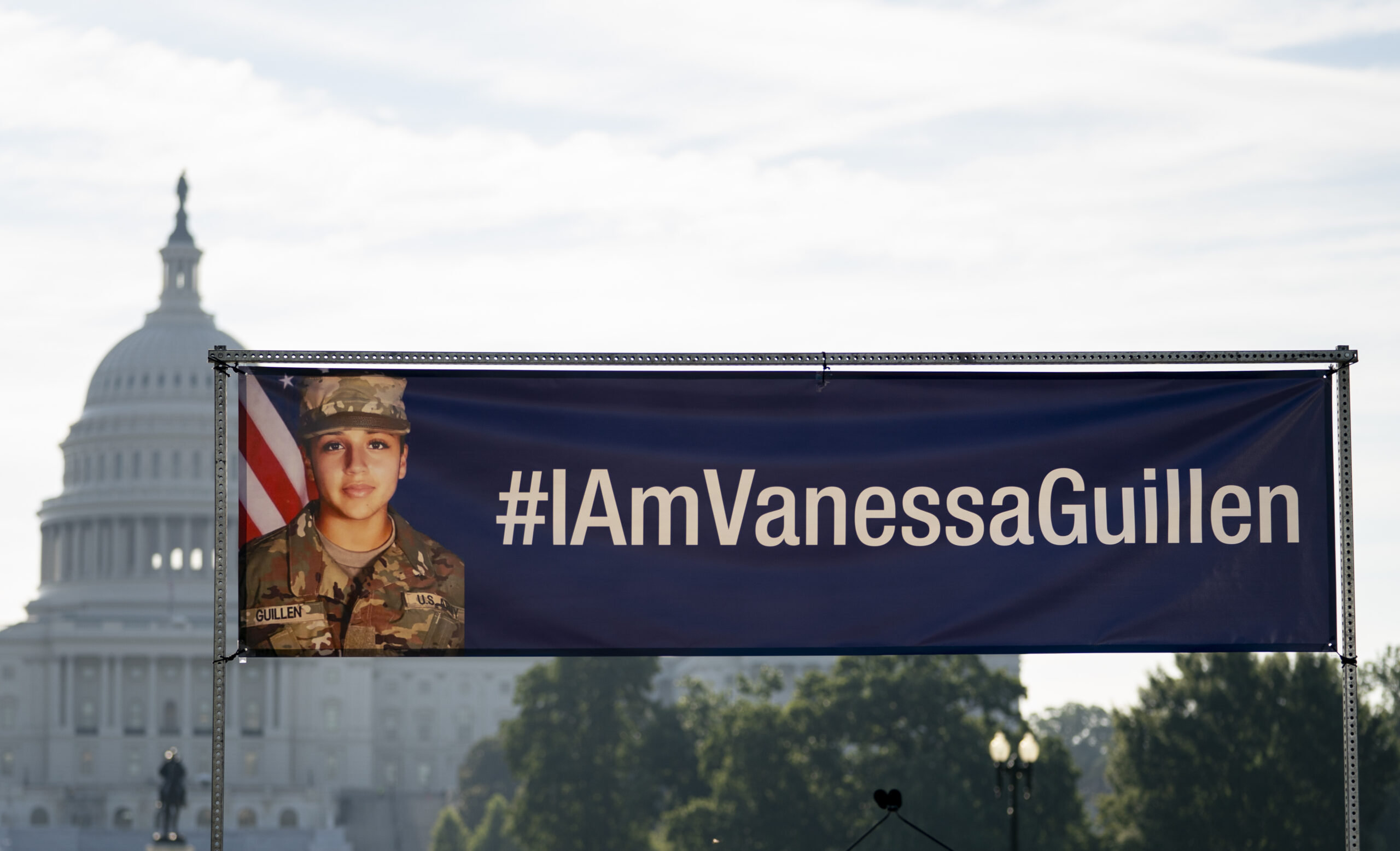
![New Army report confirms Vanessa Guillén was sexually harassed by a member of her unit before her death [Updated]](https://taskandpurpose.com/wp-content/uploads/2020/11/ap_20212567948409-2-scaled.jpg?w=740)
